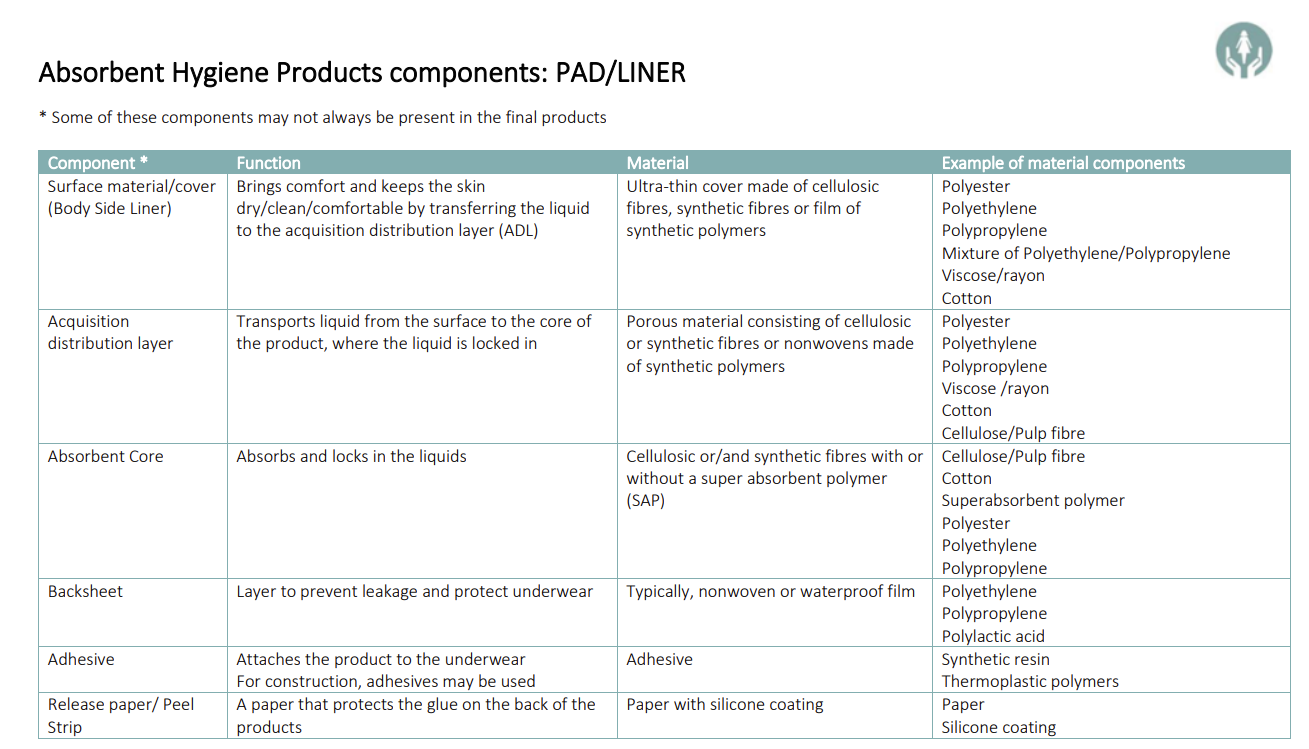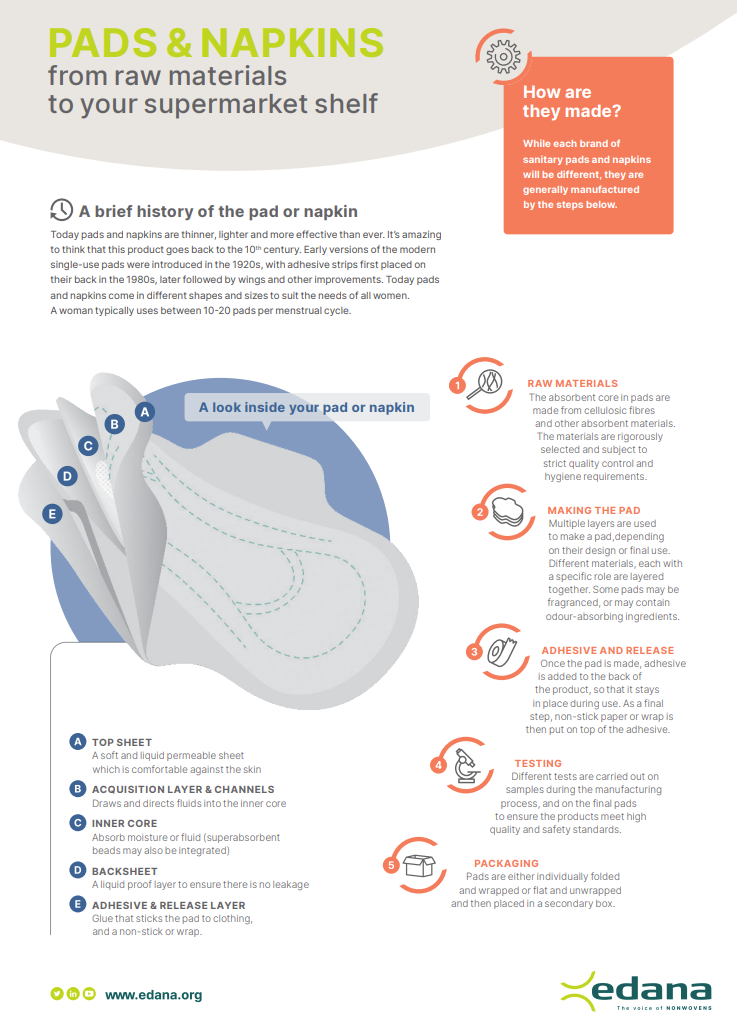Menstrual Pads and Liners
Menstrual pads are one of the oldest and most widely used menstrual protection products, evolving significantly over time to meet the needs, comfort expectations and lifestyles of millions of people around the world.Today’s menstrual pads are engineered to manage menstrual fluid efficiently and to support hygiene, comfort and confidence throughout the day. Modern designs typically combine several layers—including a soft topsheet, an acquisition and distribution layer, an absorbent core, a backsheet and secure adhesives—each playing a specific role in fluid management and leak protection. These products undergo rigorous quality and safety assessments. Beyond their functional role, pads are also central to menstrual health globally: they support full participation in school, work and daily activities, and they play an important part in tackling period poverty and promoting menstrual equity.

The menstrual pad infographic and component table
The menstrual pad infographic
This infographic provides a simple, step-by-step overview of how menstrual pads and napkins are made — from the raw materials to the finished product on supermarket shelves.
It shows the different layers inside a pad, each with a specific function: a soft top sheet, an acquisition layer that guides fluid, an absorbent inner core, a leak-proof backsheet, and the adhesive and release liner that help the pad stay in place.
It also illustrates the manufacturing journey: selecting safe and rigorously controlled raw materials, assembling multiple layers depending on the pad’s design, adding adhesive and a protective release paper, testing the product to ensure quality and safety, and finally packaging it for consumers.
The menstrual pad / liner components table
This table provides a clear overview of all the key components that make up absorbent hygiene products such as menstrual pads and liners. For each layer, it explains its function within the product, the type of material it is typically made of, and gives examples of material categories
It helps understand how each element—from the top layer that touches the skin, to the absorbent core, backsheet, adhesives, release paper, and outer wrapper—contributes to comfort, liquid management, protection, and usability. Compositions can vary across products. Optional elements like fragrances, or odour-control ingredients may be included and are always indicated on the packaging.

Menstrual products testing guidelines
The guidance document aims to meet the demand for relevant, accurate, reliable and comparable tests, for performance standards as well as substance testing across a range of menstrual products.
The guidelines are intended as a best practice tool for third-parties to consider to ensure the scientifically sound testing of menstrual products and meaningful results. They were developed by a group of experts from manufacturers of feminine hygiene products, their suppliers, and leading test institutes with expertise in testing femcare products. The guidelines are comprehensive, covering all types of femcare products (panty liners, tampons and sanitary pads), all forms of testing and each step involved in a test, from design and methodology to the interpretation and communication of results. Statistical methodology and technical parameters impacting test results were taken into consideration for the development of the guidelines.
In addition to technical and methodological guidance, the guidelines remind organisations conducting tests of several key principles. For instance, third party tests intended to serve as the basis for consumer information must include a user trial. Also, to ensure that the products are tested in an accurate manner and that the results reflect the actual experience of consumers, it is recommended to consult manufacturers and to conduct tests in a laboratory experienced in testing femcare products. Practical information such as contact details for the main manufacturers that are members of EDANA are included in the annexes, along with suggested laboratories that are EDANA members, standard method references, and questions for user trials. Any feedback and input to the guidelines is welcome and will be taken into consideration in future versions.
Menstrual pad labelling guidelines
The guidance document on AHP labelling gives details on transparency and clarity.
This EDANA guidance has been developed by manufacturers of Absorbent Hygiene Products (AHPs) to support transparent and consistent communication on product composition, including for items such as baby diapers and menstrual products. It is intended as an educational resource and does not replace the legal obligations that manufacturers must meet under existing product safety and labelling requirements.
The document provides an overview of the regulatory context set by the EU’s General Product Safety Directive, which requires that only safe products are placed on the market and that consumers are informed of any potential risks. Within this framework, the guidance explains how AHPs are designed and constructed, highlighting their multilayer structure and the range of materials commonly used, such as polyethylene, cotton, cellulose, and various synthetic or natural fibres.
To support clear and accessible communication, the guidance also proposes consumer-friendly terminology for frequently used components, presented alongside technical industry terms. It encourages manufacturers to make composition information easily available—whether on pack, on brand websites, or through digital tools such as QR codes—so consumers can understand what is in the products they use every day.
